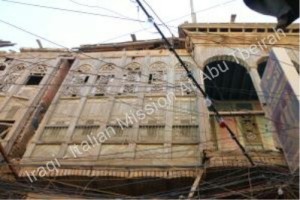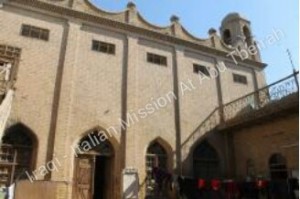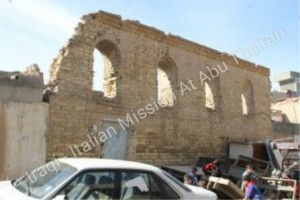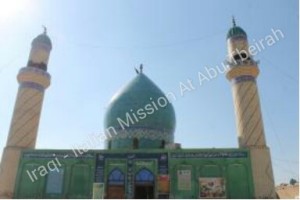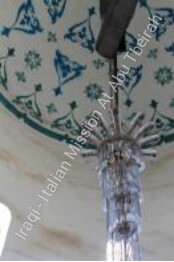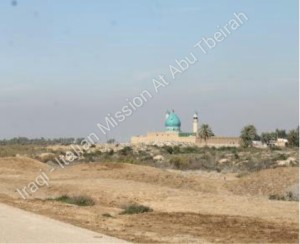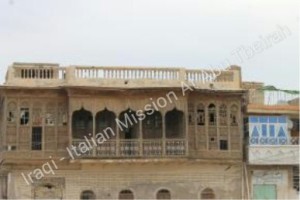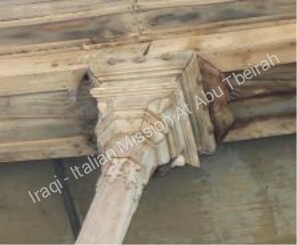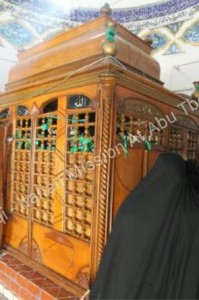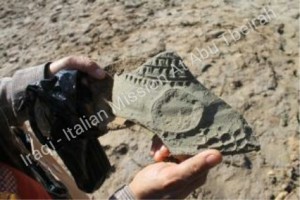Introduction
From the point of view of the Cultural Heritage, the Maysan Governorate shows two main kinds of cultural attractions for tourists: places of mainly religious interest, such as shrines and mosques, and historical remains.
Obviously, also the sites of religious meaning have very often a high value from the point of view of the History of Art.
Archaeological sites
As far as archaeological sites are concerned, Maysan governatorate is undoubtedly rich of ancient ruins and Tell, dated from the Sumerian Period to the Islamic Era. The territory of the province of Maysan is, in fact, archaeologically very poorly known. This is due mainly to the fact that the area which was most investigated during the years 1900-1980 was the western region of the Sumerian cultural tradition, while the eastern area has been mainly neglected by the western archaeologists. Only recently Iraqi archaeological missions started making surveys in the districts of Maysan.
So far, actually only four sites are excavated by Iraqi archaeological teams:
1. Tell Abu Schicha (Al Amara Al Amara Abu Shija 32,39552778 47,14869444)
2. Tell Abu Shader (Qalat Saleh Al Uzair Abu Shather 31,25 47,13611111)
3. Al Gubba’n (Al Amara Kmit Al-Quban 31,84152778 47,07933333)
4. Al Aghir (Qalat Saleh Al Uzair Al-Akeer 31,31988889 47,07922222).
None of these four sites interesting for touristic purposes. These is due not only to the poor visibility of the remains but also to the difficulties of reaching them .
Center of Amara and historical buildings
The city of Amara, founded in the 19th century is surely the center of every visit to the province, notwithstanding the fact that it can take quite a lot to reach some of the places of cultural interest. This is due to the fact that so far no reliable infrastructure is to be found in minor cities.
Amara
The main historical and artistic places which can be found in Amara are represented by:
• the covered suq
• its surrounding buildings
• the church of Mar Yusuf
• the Jewish Scola
The Suq and the Shanashil
The Suq al Maqmudiyeh shows wonderful carved wooden balconies (in Arabic shanashil) which represent a typical artistic characteristic of Iraq It is a wooden structure which can be also carved in a very artistic way which was used to close the windows of the rooms where the women lived.
Mar Yusuf al Batool
There are 21 Assyrians families (Christians of Syriac rite), almost 100 people in all, which still live in Amara. The center of their cult is represented by a church called Mar Yusuf al Batool (Saint Josef of the Virgin). The church is now inhabited by an group of people which keep the church itself. It consists in two buildings made up of bricks and edified in 1890. The walls are 15 m high and there is also a bell tower preserved in its original construction; some original glasses on the windows are still visible and the wooden door is still in place, although mostly damaged. A nice baptysterium in marble is stored in one the rooms surrounding the central courtyard. In one niche of the church there is a spot, caused probably by humidity, that is venerated as an image of Holy Mary surrounded by angels. The building is completely abandoned and one can finds also animals inside the church. In order to enter the church it is necessary to have the permit of the family living inside.
The Jewish Scola
The last Jews left Amara in the ’70 of the last century. The only remain of their presence today is represented by the walls of an ancient Schola, almost entirely destroyed. The representative of the local SBAH has shown a certain interest on its presence in the city. Surely it represents one important part of the history of Amara.
Shrine of Abdallah, Son of Ali.
The shrine is located 70 km from Amara, near the city of Qalat Saleh. The original building was edified 500 years ago, but the present construction is only 100 years old. The shrine has in general a religious significance (even if it is not the most important shrine in Maysan Province) which is no doubt higher than its artistic value. Notwithstanding this, the visual impact of the structure is quite impressive and the visit inside offers some interesting aspects (essentially the modern decoration of the dome and the minarets).
El-Madhar Archaeological site
Near the mosque of Abdullah Ibn Ali, there is an Islamic site which is very huge. The site is not excavated and it is popularly known as Tell Baccer and represents the ancient city where the site was originally built.
Introduzione
Dal punto di vista dei Beni Culturali, il Governatorato di Maysan mostra due tipi principali di attrazioni culturali per i turisti: luoghi di interesse principalmente religioso, come i santuari e moschee, e resti storici. Ovviamente, anche i siti di significato religioso hanno spesso un alto valore dal punto di vista della storia dell’arte.
Siti archeologici
Per quanto riguarda i siti archeologici interessati, il Governatorato di Maysan è indubbiamente ricco di antiche rovine e Tell, che vanno dal periodo sumerico all’epoca islamica. Il territorio della provincia di Maysan è, infatti, archeologicamente poco conosciuto. Ciò è dovuto principalmente al fatto che, l’area che è stata più studiata negli anni 1900-1980 era la regione occidentale della tradizione culturale sumera, mentre la zona orientale è stata trascurata, principalmente dagli archeologi occidentali. Solo di recente missioni archeologiche irachene hanno iniziato ad indagare nei distretti di Maysan.
Finora, in realtà solo quattro siti sono scavati da squadre archeologiche irachene:
1. Tell Abu Schicha (Al Amara Al Amara Abu Shija 32,39552778 47,14869444)
2. Tell Abu Shader (Qalat Saleh Al Uzair Abu Shather 31,25 47,13611111)
3. Al Gubba’n (Al Amara Kmit Al-crema di bellezza 31,84152778 47,07933333)
4. Al Aghir (Qalat Saleh Al Uzair Al-Akeer 31,31988889 47,07922222).
Nessuno di questi quattro siti sono attualmente interessanti per scopi turistici. Questo è dovuto non solo dalla scarsa visibilità dei resti, ma anche per la difficoltà di raggiungerli .
Il centro di Amara e i palazzi storici
La città di Amara, fondata nel 19 ° secolo è sicuramente il centro per ogni visita alla provincia, nonostante il fatto che si può perdere un bel pò di tempo per raggiungere alcuni dei luoghi di interesse culturale. Ciò è dovuto al fatto che finora non si trova alcuna infrastruttura affidabile in città minori.
Amara
I principali luoghi storici ed artistici che si possono trovare ad Amara sono rappresentati da:
•suq coperto
• gli edifici circostanti
• la chiesa di Mar Yusuf
• la Scola ebraica
Il Suq e Shanashil
Il Suq al Maqmudiyeh mostra meravigliosi balconi in legno intagliato (in arabo shanashil), che rappresentano una caratteristica artistica tipica dell’Iraq. Si tratta di una struttura in legno che può essere scolpita anche in un modo molto artistico utilizzata per chiudere le finestre delle stanze dove vivevano donne.
Mar Yusuf al Batool
Ci sono 21 famiglie assire (cristiani di rito siriaco), quasi 100 persone in tutto, che vivono ancora ad Amara. Il centro del loro culto è rappresentato da una chiesa chiamata Mar Yusuf al Batool (San Giuseppe della Vergine). La chiesa è ora abitata da un gruppo di persone che mantengono la chiesa stessa. Essa è costituita da due edifici in mattoni ed edificati nel 1890. Le pareti hanno 15 m di altezza e vi è anche un campanile conservato nella sua costruzione originale; alcuni vetri originali sulle finestre sono ancora visibili e la porta di legno è ancora al suo posto, anche se per lo più danneggiati. Un bel battistero in marmo è situato in una delle camere che circondano il cortile centrale. In una nicchia della chiesa c’è una macchia, probabilmente causata da umidità, che è venerata come immagine di Maria Santissima circondata da angeli. L’edificio è completamente abbandonato e si possono trovare anche gli animali all’interno della chiesa. Per entrare nella chiesa, è necessario avere il permesso della famiglia che vive al suo interno.
La Scola ebraica
Gli ultimi ebrei lasciarono Amara negli anni ’70 del secolo scorso. L’unico resto della loro presenza oggi è rappresentato dalle mura di un antica Scola, quasi interamente distrutta. Il rappresentante della SBAH locale ha mostrato un certo interesse per la sua presenza in città. Sicuramente rappresenta una parte importante della storia di Amara.
Santuario di Abdallah, figlio di Ali.
Il santuario si trova a 70 km da Amara, vicino alla città di Qalat Saleh. L’edificio originario fu edificato 500 anni fa, ma l’attuale costruzione è a soli 100 anni. Il santuario ha, in generale, un significato religioso (anche se non è il santuario più importante della provincia di Maysan) che è senza dubbio superiore al suo valore artistico. Nonostante questo, l’impatto visivo della struttura è abbastanza impressionante e la visita offre all’interno alcuni aspetti interessanti (essenzialmente la decorazione moderna della cupola ed i minareti).
Sito archeologico El-Madhar
Vicino alla moschea di Ibn Abdullah Ali, c’è un sito islamico, che è molto grande. Il sito non è stato scavato ed è popolarmente noto come Tell Baccer e rappresenta l’antica città dove il sito è stato originariamente costruito.
